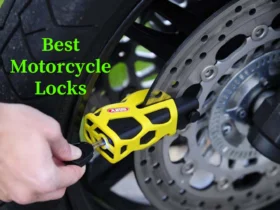It gets hot in the summer, regardless of whether you believe global warming is fact or fiction. Motorcycles with air-cooled engines are complex, but liquid-cooled motors still need maintenance to prevent overheating. Coolant, in a symbolic way, keeps your cooling system running. Not only does your body need to be ready for the summer heat with this shift in the weather, but also your motorbike. Therefore, we’ve compiled a list of some of the essential tips for summer riding trips.
Change your coolant
The ideal practice is to change the coolant at least once per season, if not more than once, for even better outcomes and more reliable performance, mainly if you often use your vehicle. The most excellent fluid for any Powersports application is fresh fluid. Thus appropriate coolant system maintenance is crucial for optimum performance and peace of mind.
This recommendation, which is appropriate for all types of bikes, is based on the high-performance qualities of Engine Ice Hi-Performance Motorcycle Coolant.
Why does the coolant need to be changed?
Repairs are more expensive than maintenance. One of the motorbike fluids that is frequently forgotten about is coolant. Improper coolant maintenance can significantly impact your bike’s performance and parts’ longevity. Since coolant accomplishes so much more than only avoiding freezing, the term “antifreeze” is misleading.
Additionally, it shields the metal from corrosion, increases the boiling point to levels more significant than those of distilled water, and does much more. You may ride confidently knowing that your motorbike will operate at its peak performance by appropriately changing the Motorcycle coolant system using the appropriate product in a suitable time frame.
Do I need to flush the system after every coolant replacement?
You are strongly advised to cleanse the system whenever you change your coolant. As dangerous impurities and pollutants can result in scaling and other types of damage within the walls of the hoses, radiator, and water pump, water corrodes your system from the inside out.
Coolant can degrade, and additives can wear out over time. Corrosion typically leads to the development of sludge, which, if left in the system, builds up and can cause corrosion and, eventually, leaks in the system. The best approach to ensure your new coolant operates well and delivers consistent results is to flush the system as instructed by the manufacturer.
Can you mix coolants?
Coolants shouldn’t be combined in general. To maintain the ideal level, it is always better to top off with the same coolant or to add a little filtered or reverse osmosis-purified water. There is a significant chance of cross-contamination or an adverse reaction in the solution when using various glycol types, water, and additive technologies. When in doubt, flushing the system and replacing the old coolant with new is the recommended procedure.
Conclusions
Internal combustion engines, which power motorcycles, heat quickly. A motorbike coolant system can help with that. It minimizes the possibility of overheating and guards against engine damage.
You should spend money on a high-quality coolant solution to guarantee the proper operation of your liquid-cooled engine. It has several advantages, including reducing heat and preventing corrosion. In this manner, a coolant improves your engine’s performance and extends the engine’s life.
Several variables, including age, influence the selection of a coolant, make, model, operating environment, and weather. This overview should have made it easier for you to comprehend the fundamentals of tips for summer riding trips.
A vital motorbike fluid used to reduce engine heat is called a coolant. Antifreeze and water are combined to create a coolant. Weather conditions affect the water-antifreeze ratio.
Although this might vary, the average bike has a coolant capacity of three to four liters.
You risk getting burned if you try to open the main drain bolt while the engine is running. It is due to the system becoming pressurized, which led to the coolant exploding.
For long-lasting cooling, you should only use the prescribed coolant or antifreeze for your motorbike since bikes require a specific antifreeze coolant.
Adding too much coolant to the reservoir/expansion bottle will only result in the excess fluid being boiled off.











Leave a Review